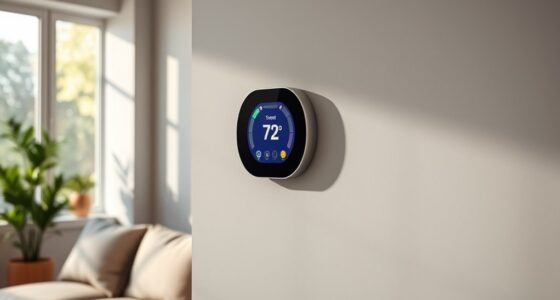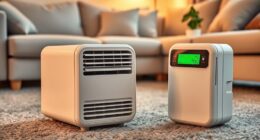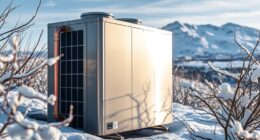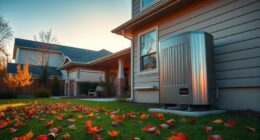Are you fed up with expensive energy bills and inefficient heating systems? Look no further!
In this article, we will be diving into the world of energy-efficient heat pumps, the superheroes of savings.
We’ll explore the ins and outs of SEER and HSPF ratings, calculate potential savings through cost-benefit analysis, and guide you in selecting the perfect size for your home.
Get ready to optimize your performance and unlock the secrets of maximizing savings with these innovative heat pumps.

Key Takeaways
- Understanding energy efficiency ratings such as SEER, EER, HSPF, and COP is crucial for maximizing savings with energy-efficient heat pumps.
- Conducting a cost-benefit analysis, considering initial investment and installation costs, helps determine potential savings and the cost-effectiveness of heat pumps.
- Proper sizing, regular maintenance checks, and installation of programmable thermostats and proper insulation are essential for optimizing performance and energy savings.
- Government incentives, such as rebates and tax credits, reduce the cost of purchasing and installing energy-efficient heat pumps and promote energy efficiency and savings.
Energy Efficiency Ratings: Understanding SEER and HSPF
We need to understand the SEER and HSPF ratings to determine the energy efficiency of heat pumps.
When it comes to energy efficiency ratings, two important metrics to consider are SEER and EER.
SEER, or Seasonal Energy Efficiency Ratio, measures the cooling efficiency of a heat pump over an entire cooling season. It takes into account factors such as the outdoor temperature range and the heat pump’s performance at different operating conditions.
On the other hand, EER, or Energy Efficiency Ratio, measures the cooling efficiency of a heat pump at a specific outdoor temperature. It’s a static measurement that doesn’t account for seasonal variations.
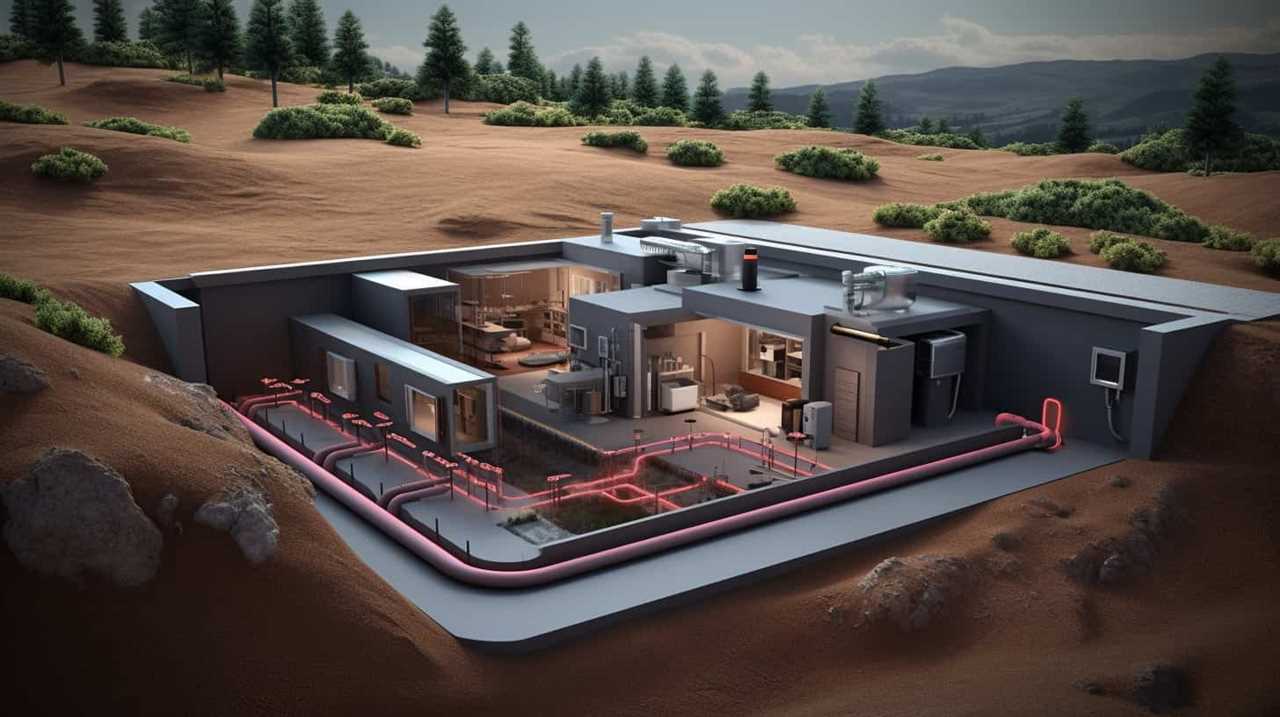
When comparing heat pump performance, it’s also important to consider HSPF, or Heating Seasonal Performance Factor, and COP, or Coefficient of Performance.
HSPF measures the heating efficiency of a heat pump over an entire heating season, while COP is a ratio of the heat pump’s heating or cooling output to its energy input.
Calculating Potential Savings: Cost-Benefit Analysis of Heat Pumps
To determine the potential savings of using heat pumps, we’ll conduct a cost-benefit analysis. This analysis allows us to compare the initial cost of installing a heat pump with the long-term savings in energy costs.
Here are three key factors to consider when calculating the potential savings:
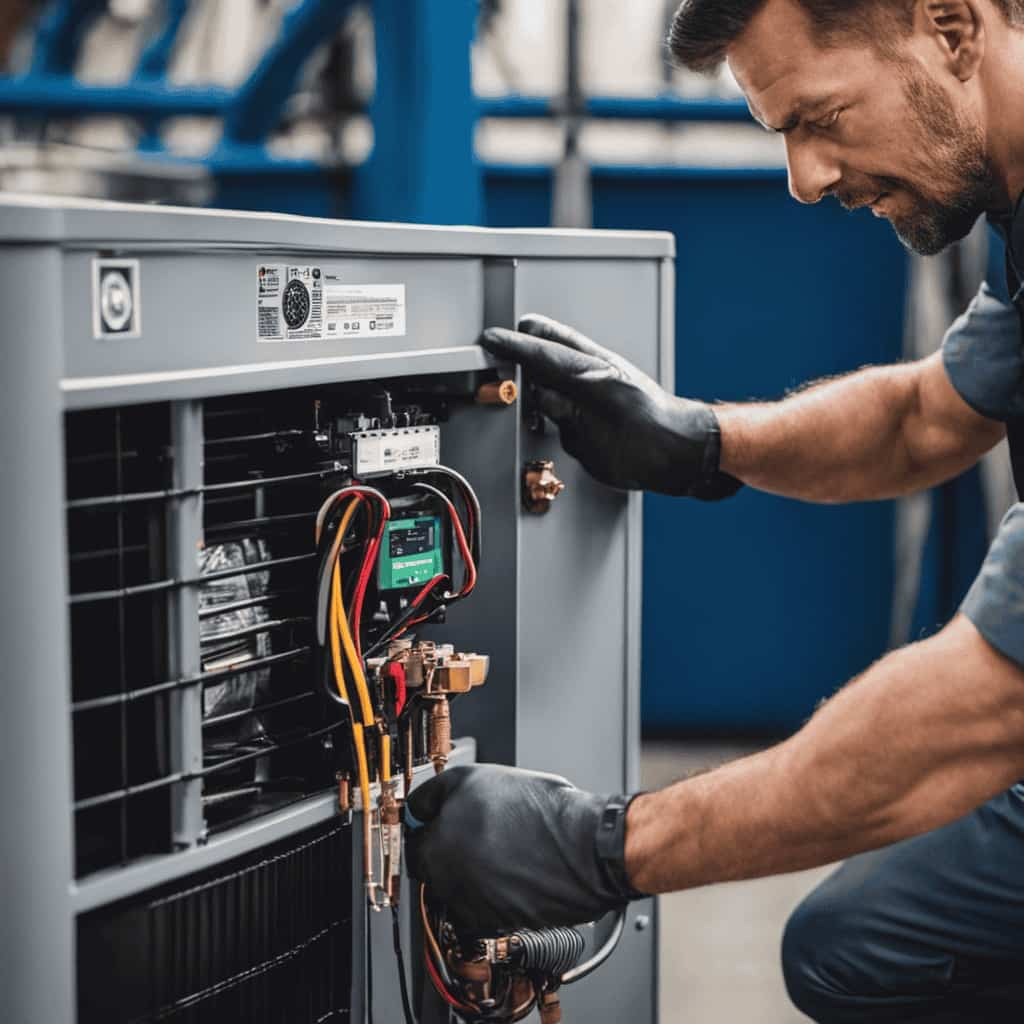
-
Initial Investment: The cost of purchasing and installing a heat pump can vary depending on factors such as the size of your home and the efficiency rating of the unit.
-
Energy Savings: Heat pumps are known for their energy efficiency, which can lead to significant cost savings on your monthly utility bills.
-
Payback Period: The payback period is the amount of time it takes for the energy savings to surpass the initial investment. It’s an important metric to consider when evaluating the cost-effectiveness of installing a heat pump.
Selecting the Right Size: Sizing Considerations for Energy-Efficient Heat Pumps
Considering the size of your space is crucial when selecting energy-efficient heat pumps. Sizing guidelines play a significant role in ensuring optimal performance and energy savings. Oversized heat pumps may result in short cycling, where the system turns on and off frequently, leading to inefficient operation and unnecessary wear and tear.
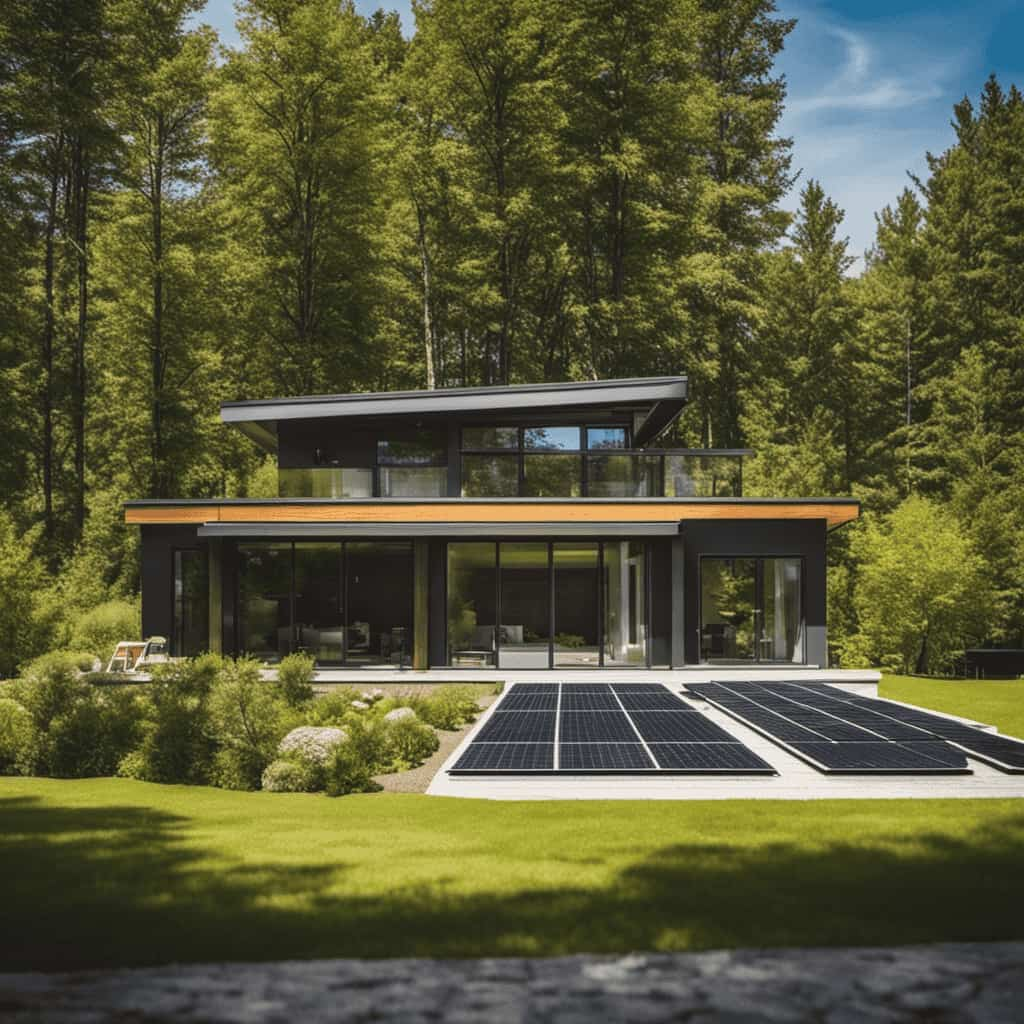
Undersized heat pumps, on the other hand, may struggle to meet the heating or cooling demands of the space, leading to reduced comfort levels. To determine the appropriate size, factors such as the square footage, insulation levels, ceiling height, and number of occupants must be considered.
It’s also important to take into account the installation requirements, such as the availability of space for the outdoor unit, access for ductwork, and electrical requirements. By carefully assessing these factors, you can select the right size heat pump that will provide optimal comfort and energy efficiency for your space.
Optimizing Performance: Tips for Increasing Energy Efficiency
To maximize energy efficiency and optimize performance, we can implement several tips for increasing the efficiency of heat pumps. Here are three ways to achieve this:
-
Regular maintenance: Schedule annual maintenance checks to ensure that your heat pump is operating at peak efficiency. This includes cleaning or replacing air filters, checking refrigerant levels, and inspecting the overall system for any issues.

-
Programmable thermostats: Install a programmable thermostat to regulate the temperature in your home more effectively. This allows you to set different temperatures for different times of the day, reducing unnecessary energy consumption and expenses.
-
Proper insulation: Ensure that your home is properly insulated to prevent heat loss. Insulate walls, ceilings, and floors to create a thermal barrier that keeps the warm air inside during winter and outside during summer. This increases the effectiveness of your heat pump and reduces energy expenses.
Government Incentives: Exploring Rebates and Tax Credits for Energy-Efficient Heat Pumps
We can take advantage of government incentives by exploring rebates and tax credits for energy-efficient heat pumps. These incentives not only help reduce the cost of purchasing and installing heat pumps but also encourage the adoption of environmentally friendly technologies. To help you understand the available incentives, let’s explore eligibility requirements and compare the incentives offered by different government programs.
| Government Program | Eligibility | Incentives |
|---|---|---|
| Program A | Income-based eligibility | Up to $500 rebate |
| Program B | Residential properties only | 30% tax credit |
| Program C | Energy Star certified heat pumps | Up to $1,000 rebate |
Frequently Asked Questions
Are There Any Additional Maintenance Costs Associated With Owning an Energy-Efficient Heat Pump?
There aren’t any additional maintenance costs associated with owning an energy-efficient heat pump. With potential warranty coverage, regular maintenance can ensure optimal performance and maximize energy savings.
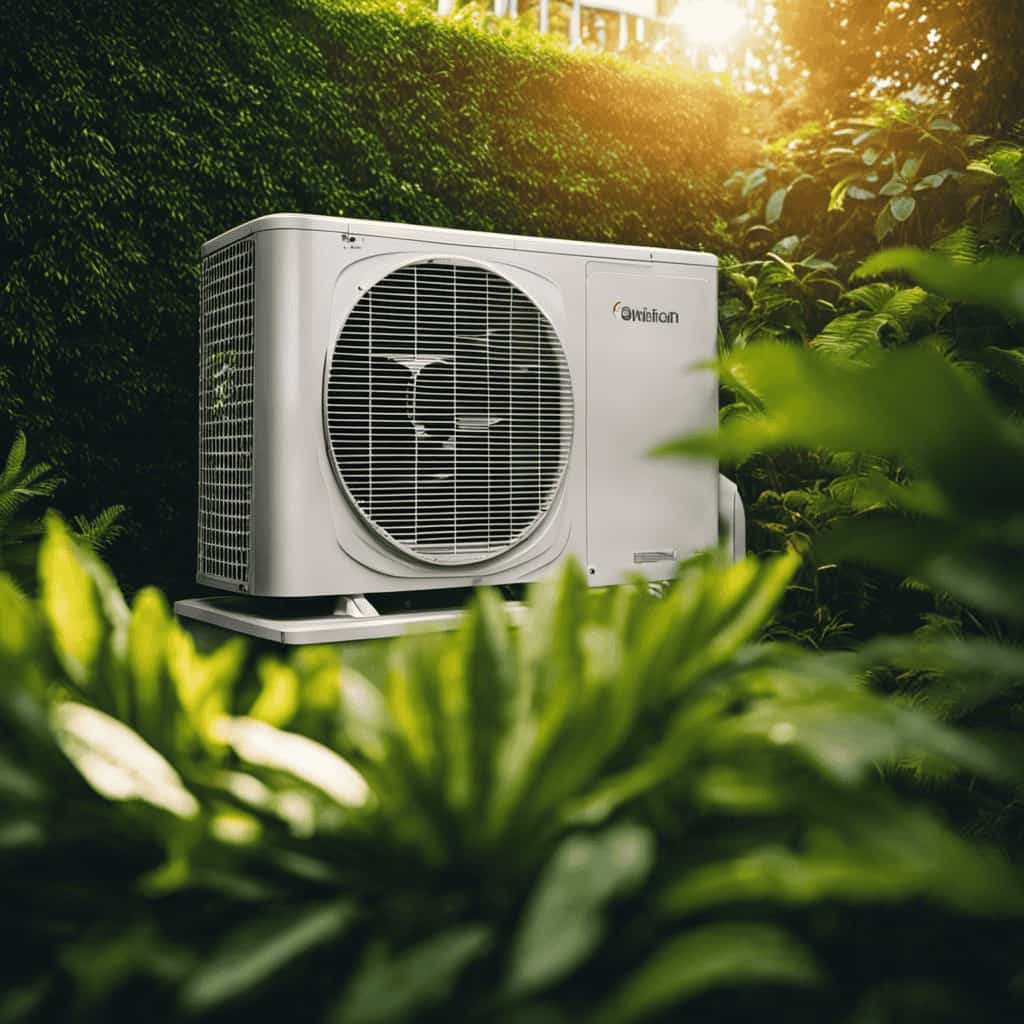
Can I Use an Energy-Efficient Heat Pump in Colder Climates?
Yes, energy-efficient heat pumps can be used in colder climates. They are designed to perform well in extreme temperatures and offer benefits such as efficient heating and cost savings.
How Long Does an Energy-Efficient Heat Pump Typically Last?
Energy-efficient heat pumps typically last between 15 to 20 years. However, the lifespan can vary depending on factors such as maintenance, usage, and quality of the unit. It’s important to check the warranty coverage for peace of mind.
Are There Any Potential Health Risks Associated With Using a Heat Pump?
Potential health risks associated with using a heat pump are minimal, as they do not emit any harmful gases or fumes. However, regular maintenance and clean filters are essential to ensure optimal performance and minimize energy consumption.
Can I Install an Energy-Efficient Heat Pump Myself, or Is Professional Installation Required?
Installing an energy-efficient heat pump yourself may seem like a good idea, but professional installation is highly recommended. The benefits of professional installation include proper sizing, efficient operation, and warranty coverage.

Conclusion
After delving into the world of energy-efficient heat pumps, we’ve discovered the key factors that contribute to maximizing savings.
Understanding SEER and HSPF ratings, conducting cost-benefit analyses, selecting the right size, optimizing performance, and exploring government incentives are all crucial steps in achieving energy efficiency.
By following these guidelines, we can save money while also being kind to the environment.
Just like finding a hidden treasure, unlocking the potential of energy-efficient heat pumps brings both financial and environmental rewards.



